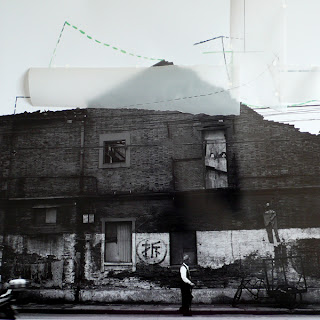bashanghai125.xml
Say Art Deco and everyone knows what you mean: sharp geometry, cool
curves, an effortless marriage of style and function. Where to find it,
though, is a different matter.
Dotted around London and New York are palaces of 1920s and 1930s
modernism - such as Senate House in Bloomsbury and the Chrysler
building on Lexington Avenue - their straight lines and sweeping curves
dominating their historic sites or looking almost quaint amid the
higher, newer skyscrapers now surrounding them.
But London and New York are not Art Deco cities. The 1930s, the
movement's peak decade, were not great years for the West, and while
apartment blocks from the period still punctuate the suburbs, they
suffered from the Second World War and post-industrial decay. Too
often, they look shabby and forgotten beside the sturdier homes of
previous eras and the bright convenience of the present.
Yet in a few hold-outs, where history played odd tricks, Art Deco still
dominates. Their names are surprising: Napier in New Zealand, rebuilt
in one go after an earthquake in 1931; Miami Beach; the Eritrean
capital Asmara, a masterpiece from the age of the brief Italian empire.
Shanghai, home to more skyscrapers than New York and a population of 20
million swept into an endless sprawl of suburbs, is not a city one
tends to associate with Art Deco. Yet the 1930s was Shanghai's first
great decade of economic boom, and both the Western bankers who ran the
city and the new Chinese middle classes wanted to associate only with
the new.
In a whirl of construction, grandiose office buildings, apartment
blocks and showpiece villas were erected by international firms, for
European exiles washed up on the shores of the Yangtse, young bachelors
on short-term postings or Chinese students who had followed the fashion
for professional training abroad.
Ladislaus Hudec, a Czech architect from Budapest who was sent to
Siberia by the Russians, ended up in Shanghai designing high-rises such
as the 22-storey Park Hotel (1934) overlooking the racecourse, at the
time the tallest building outside of America.
C H Gonda, another Czech, built cinemas such as the Capitol, now
government offices, and the Cathay, a startling beneficiary of
Shanghai's new trendiness. Recently refurbished, it remains a gleaming
star on the former Avenue Maréchal Joffre, now called Huaihai Lu and
once again the city's most fashionable street.
The years in between have been traumatic: war, Cultural Revolution, the
sudden reopening to the West. It is only now the city is being rebuilt
once again (and much of this architectural reliquary is being
demolished) that Shanghai is being recognised as probably the most
extensive Art Deco landscape anywhere in the world.
After five decades frozen in time, in which waves of poor new residents
have been bundled, a family to a room, into expropriated mansions, this
architectural collection is now emerging.
Two new books, and an associated exhibition on display in the city,
have focused minds. Whether they will be enough to stop the rampant
destruction is another matter. "So many beautiful buildings have been
knocked down: I can't be optimistic about the outlook for protecting
historical buildings," says Deke Erh, co-author of Shanghai Art Deco,
who grew up in Shanghai's French Concession and has become the city's
best-known architectural photographer.
Yet there are signs that even a country as merciless with its past as
China has recognised that its colonial architecture could be an asset,
not an embarrassment. The Peace Hotel on Shanghai's famous waterfront,
the Bund, is under government restoration; once upon a time it was the
Cathay, East Asia's most glamorous address, from whose window young Jim
watched the start of the Second World War in Empire of the Sun. A
handful of the grander family homes, of the sort Jim lived in, are
being "done up" as status symbols by Shanghai's new elite - in some
cases the returned grandchildren of the old elite.
It's not just the buildings. The French Concession, which along with
the International (British and American) Concession has the highest
concentration of pre-revolutionary Western architecture in the city,
used to be full of junk shops. Today it has boutiques and antiques
stores, where the same distinctive old radios and wooden chests are
sold at much higher prices.
Cultural leftovers illuminate Phantom Shanghai, a collection of ghostly
images by the Canadian photographer Greg Girard. While Erh focuses on
what is there, Girard photographs what is not. Navigating the
fluorescent-tinged demolition zones of old Shanghai, Girard narrates
the destruction of a way of life. In some images, house fronts have
been ripped off, to reveal the remains of bedrooms or kitchens. In
others, people still eke out a life amid furniture and detritus
inherited from another age. The decay of a city as its residents lapsed
into squalour is all too evident; in one mansion, a fantastical mixture
of Art Deco and Southern Chinese fancy, Girard counted 152 people
occupying a space originally built for an opium merchant and his family
- albeit a family that included four wives.
But there is also great humanity here, and Girard finds it hard to
begrudge these families their new flats. "I am very anti-nostalgic," he
says, though it would be a hard heart that found no nostalgia here.
The fluorescence is that of the gaudy new Shanghai that overlooks these
curious scenes. And of course it continues; as Girard and I spoke in a
café on the Bund, more bulldozers were moving in a few hundred yards
away.
# 'Shanghai Art Deco' by Deke Erh and Tess Johnston (Old China Hand
Press, Hong Kong). 'Phantom Shanghai' by Greg Girard (Magenta, £25). An
exhibition of photographs from 'Phantom Shanghai' runs at Studio Rouge
M50, 50 Moganshan Lu, Shanghai, from Sept 30-Oct 21.













